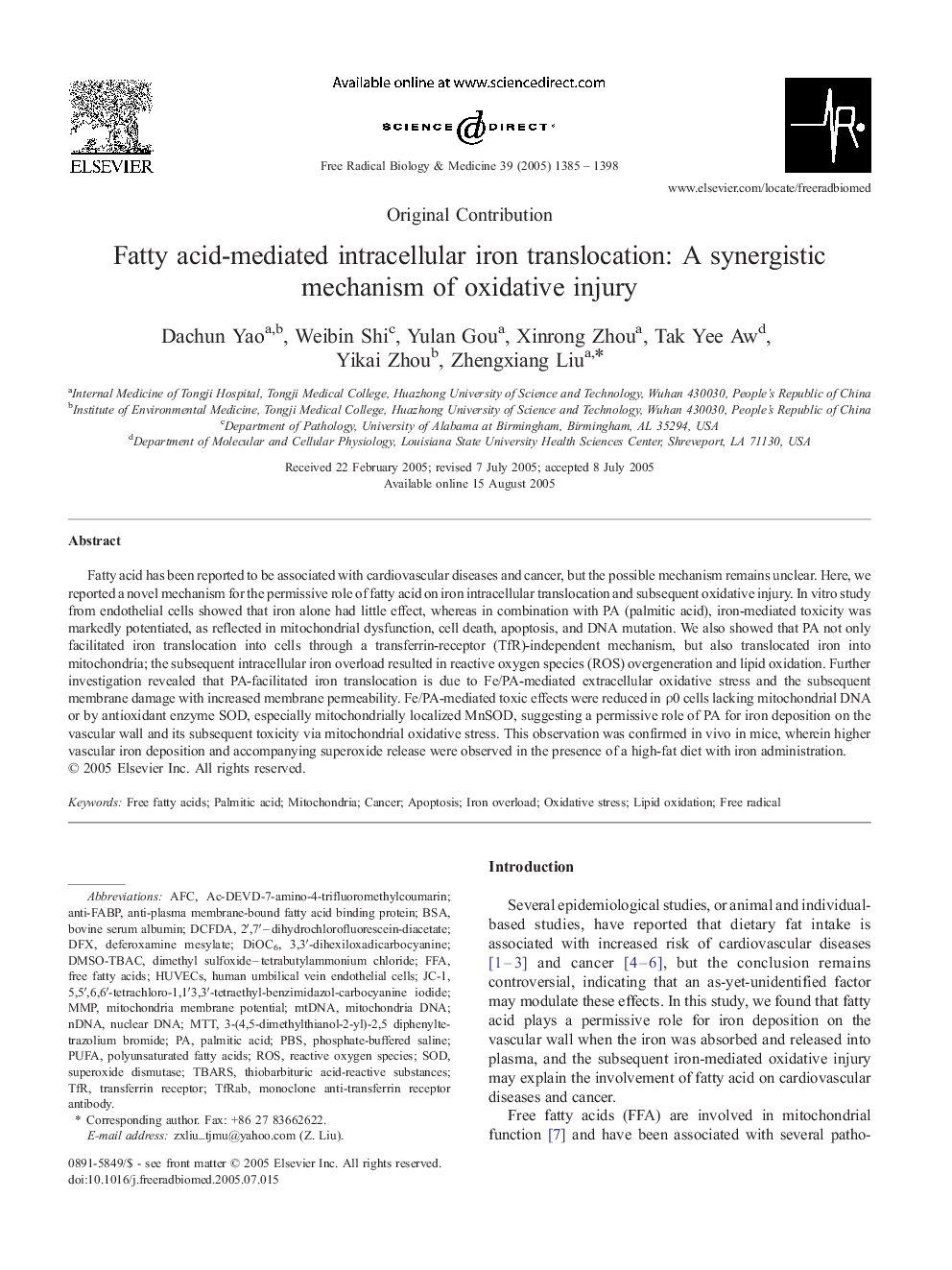| Article ID | Journal | Published Year | Pages | File Type |
|---|---|---|---|---|
| 10739529 | Free Radical Biology and Medicine | 2005 | 14 Pages |
Abstract
Fatty acid has been reported to be associated with cardiovascular diseases and cancer, but the possible mechanism remains unclear. Here, we reported a novel mechanism for the permissive role of fatty acid on iron intracellular translocation and subsequent oxidative injury. In vitro study from endothelial cells showed that iron alone had little effect, whereas in combination with PA (palmitic acid), iron-mediated toxicity was markedly potentiated, as reflected in mitochondrial dysfunction, cell death, apoptosis, and DNA mutation. We also showed that PA not only facilitated iron translocation into cells through a transferrin-receptor (TfR)-independent mechanism, but also translocated iron into mitochondria; the subsequent intracellular iron overload resulted in reactive oxygen species (ROS) overgeneration and lipid oxidation. Further investigation revealed that PA-facilitated iron translocation is due to Fe/PA-mediated extracellular oxidative stress and the subsequent membrane damage with increased membrane permeability. Fe/PA-mediated toxic effects were reduced in Ï0 cells lacking mitochondrial DNA or by antioxidant enzyme SOD, especially mitochondrially localized MnSOD, suggesting a permissive role of PA for iron deposition on the vascular wall and its subsequent toxicity via mitochondrial oxidative stress. This observation was confirmed in vivo in mice, wherein higher vascular iron deposition and accompanying superoxide release were observed in the presence of a high-fat diet with iron administration.
Keywords
deferoxamine mesylateFFAnDNAHUVECSAFCTBARSDCFDAJC-1TFRDFXDIOC6PBSMMPBSAMitochondria DNANuclear DNAMTTROSbovine serum albuminPolyunsaturated fatty acidsPUFAFree fatty acidsLipid oxidationOxidative stressApoptosismtDNAFree radicalSODCancerHuman umbilical vein endothelial cellsSuperoxide dismutasePhosphate-buffered salinethiobarbituric acid-reactive substancesMitochondriaIron overloadPalmitic acidMitochondria membrane potentialReactive oxygen speciestransferrin receptor
Related Topics
Life Sciences
Biochemistry, Genetics and Molecular Biology
Ageing
Authors
Dachun Yao, Weibin Shi, Yulan Gou, Xinrong Zhou, Tak Yee Aw, Yikai Zhou, Zhengxiang Liu,
